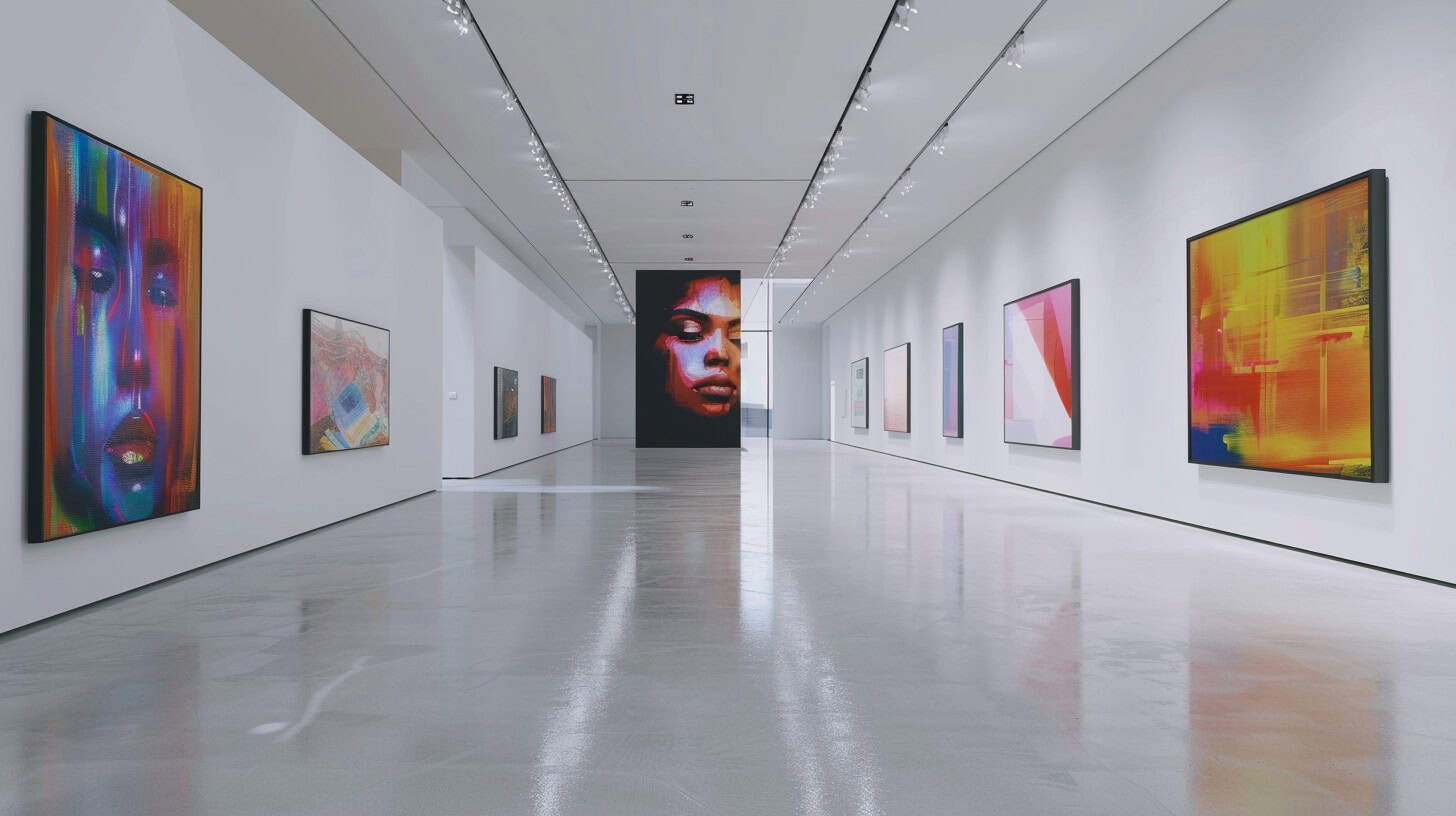Struggling to make money with your art? The online art market will hit $23.79 billion by 2030. This article will show you how to profit from AI-generated art, offering four solid strategies and success tips.
Start earning today.
Key Takeaways
To make money with AI art, use tools like DALL-E 2 and NightCafe to create unique and high-quality images. Give clear instructions for better results.
Selling AI-generated art online, making NFTs, offering artwork services, and selling prints or merchandise are good ways to earn cash.
Improve your skills by developing a unique style, building an online presence, staying updated on trends and technology, being careful about copyright issues, and working with others in the AI art community.
Table of Contents
Understanding AI Art
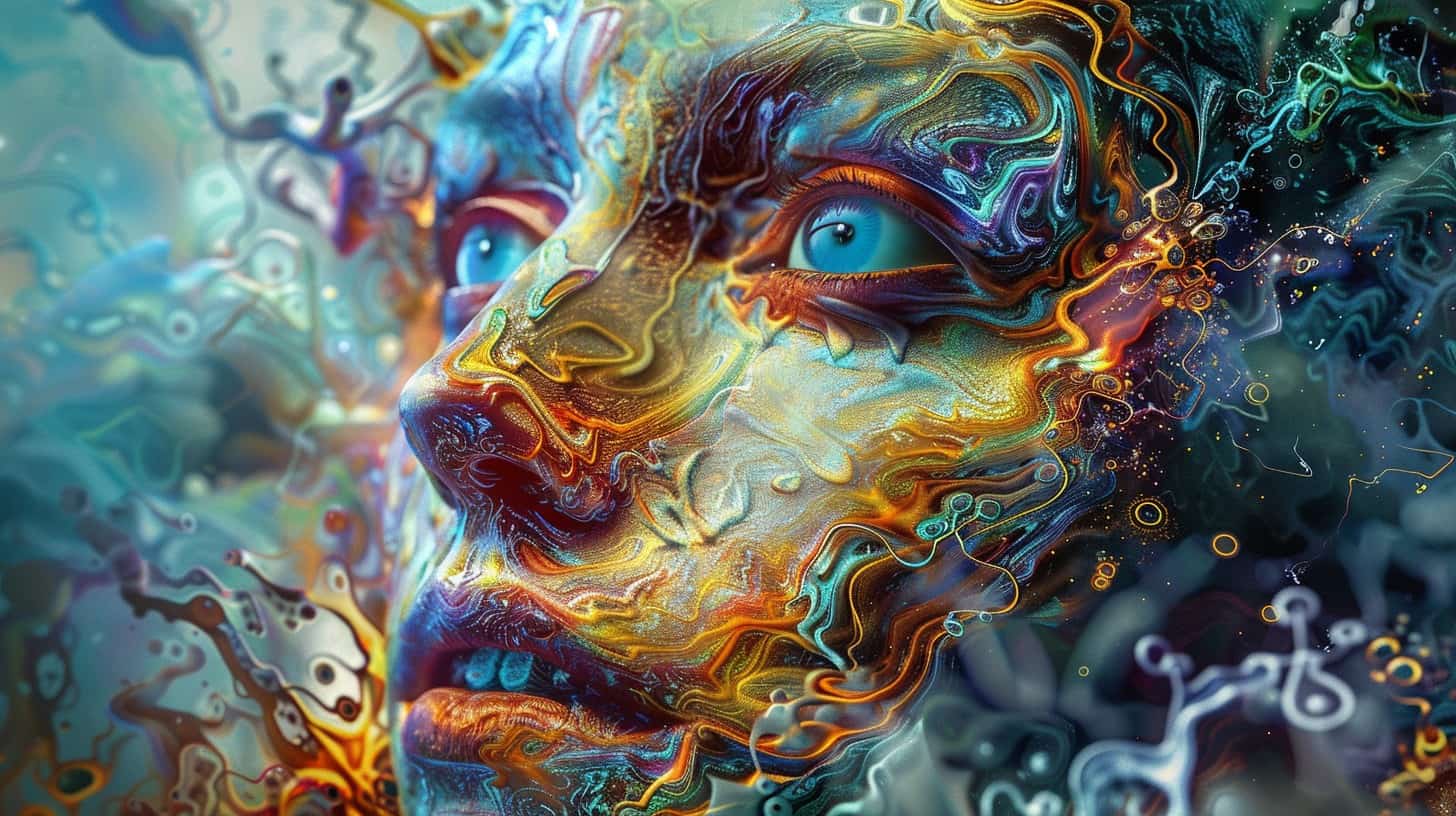
AI art uses artificial intelligence to create images. Machines learn from loads of data, including photos and paintings, then make their own art. Tools like DALL-E 2 by OpenAI help you turn words into pictures.
You type what you want, and the AI brings it to life.
The search for “make money with AI art” has gone up in the last year. People see the value in these digital creations. Quality is key, as better-looking art tends to sell more. ChatGPT even helps improve your image prompts, making sure each piece stands out.
Artificial intelligence is transforming how we create and appreciate art, opening new doors for artists and creators.
How to Use AI Art to Make Money
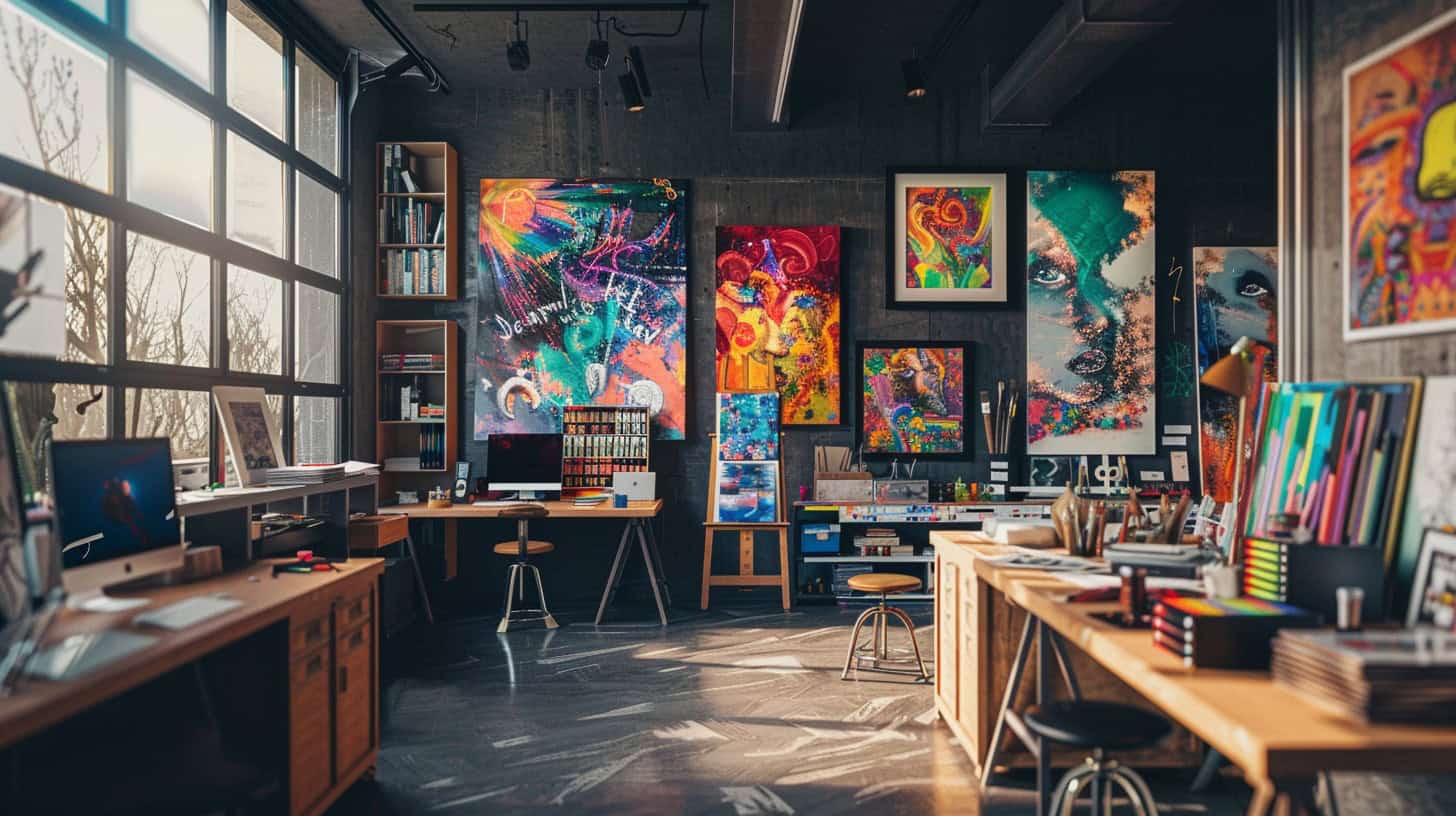
To make money with AI art, start by creating unique images that stand out. Tools like DALL-E and NightCafe help turn your ideas into digital art, including all about NSFW AI art, which sells well online.
Creating High-Quality Images
Making great pictures with AI needs using top tools like DALL-E 2, Midjourney, and Jasper. These help you turn simple ideas into stunning visuals. Start by giving clear, detailed instructions in your prompt.
This way, the AI knows exactly what you want. If the first try doesn’t wow you, tweak your prompt and try again.
I once used a vague prompt and got a blurry picture. Learning from that mistake, I refined my prompts with details—like colors and style—and the results improved dramatically. Also, for posters or wallpapers, make sure to use high-resolution images.
Upscaling is key for bigger projects to keep your art looking sharp at any size.
Using the Right Prompt
After focusing on creating high-quality images, the next step involves choosing the right prompt. The success of AI art depends heavily on this choice. A good prompt sets clear directions for AI, leading to art that stands out.
For instance, detailed instructions like “a sunset over a futuristic city with flying cars” guide AI more effectively than simply saying “city scene.” ChatGPT recommends using specific details that reflect what you want to see in your final piece.
Refining prompts is key. If the first result isn’t perfect, tweak your words slightly for improvements. This might mean adding more description or changing some terms used initially.
Just like refining a recipe until it’s just right, adjusting your prompt fine-tunes the artwork produced by AI generators such as DALL-E or NightCafe. Always aim for clarity and preciseness in your commands to these tools for optimal results.
Refining your Prompt
Refining your prompt turns good AI art into great ones. First attempts at using generators like DALL-E or ChatGPT might not give perfect results. That’s where tweaking comes in—adjusting your initial instructions to get more detailed and vivid images.
It’s all about adding, removing, or changing words to guide the AI towards what you envision.
For example, I once wanted a digital painting of a sunset at a lake, but it lacked warmth and color depth. By refining the prompt to include “vibrant colors” and “reflection on water,” the output was much closer to my vision.
This step is crucial for anyone serious about making money with AI art, since it can vastly improve the quality of your creations.
ChatGPT can suggest ways to refine image prompts for better detail and representation.
Upscaling your Image
After refining your prompt to perfection, upscaling becomes a crucial step. Upscaling images is vital for making them look sharp on posters, wallpapers, or billboards. With improved AI quality, this process now delivers more effective results.
Tools like Photoshop and GIMP help in enhancing image resolution without losing detail. This strategy ensures your AI art stands out in online marketplaces or when printed for physical sale.
Using higher resolution images also makes monetization easier—clearer details attract buyers looking for quality visuals for their spaces or digital collections. It’s recommended to upload artworks at the highest possible quality, aiming for resolutions that support large format prints and digital displays effectively.
Popular AI Art Generators
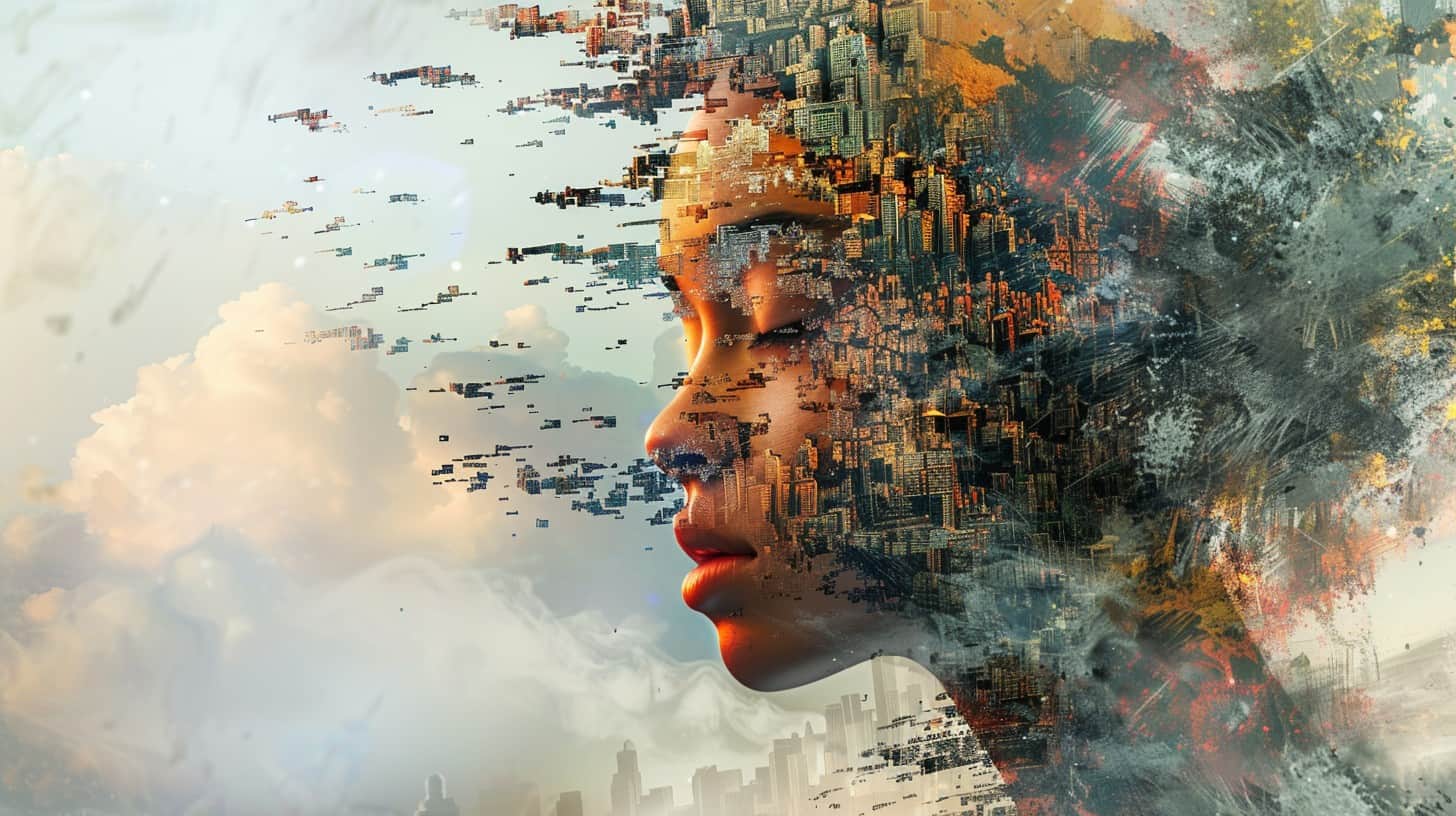
Finding the right AI art maker tool is key. DALL-E, NightCafe, Canva, and Vance are top picks for creating cool pictures.
DALL-E by OpenAI
DALL-E by OpenAI shines in making surreal images. It takes your words and turns them into pictures that stretch imagination. Say exactly what you want, and it creates art no one has seen before.
Imagine asking for a painting of a cactus as a computer—DALL-E makes it real.
This tool is key for those who love to explore beyond usual limits. With the right detailed prompt, DALL-E transforms ideas into high-quality pictures. Each try lets you refine your instructions, improving how well the final picture matches your vision.
Creators use these unique images for everything from digital art to marketing magic on social media platforms like Instagram or YouTube videos, hitting just the right note with target audiences looking for something new under the sun of artificial intelligence artwork creations.
NightCafe
NightCafe Studio stands out with its creative filters, effects, and editing tools. These are not just any tools; they’re inspired by well-known artists and key art movements. This special touch gives your AI artwork a unique flavor—think of it as adding a dash of history’s finesse to modern technology.
I’ve used NightCafe to breathe life into bland prompts, transforming them into eye-catching digital artworks that capture attention.
It also supports high-resolution image uploads. This is crucial for artists aiming to make money through their creations. Higher resolution means better quality prints and merchandise, opening up more avenues for sales.
From my experience, presenting artwork in higher detail significantly boosts its appeal in the online marketplace, making it easier for potential buyers to click “purchase.”.
Canva AI
Moving from NightCafe, Canva AI steps up as a go-to for anyone aiming to blend creativity with ease. This platform is packed with AI-driven features that make design work feel like a breeze.
Users get to create everything from eye-catching designs and presentations to social media graphics without breaking a sweat. It leverages artificial intelligence in ways that simplify the creative process, ensuring your projects look professional with minimal effort.
I’ve personally used Canva AI to generate unique layouts and social media posts, tapping into its rich set of tools like photo editing and text-to-image synthesis. The experience? Streamlined and productive.
With just a few clicks, I transformed basic ideas into visually appealing content—proof that you don’t need deep learning or advanced graphic design skills to achieve great results.
Canva’s user-friendly interface means quick learning curves and more time focusing on unleashing your artistic style.
Vance AI Art Generator
Shifting gears from Canva AI, Vance AI Art Generator sets itself apart with its unique ability to turn photos into artistic masterpieces. This platform shines in transforming everyday images into stunning pieces of art across various styles, thanks to its collection of filters and effects.
It offers users complete control over the creation process, ensuring that even those new to AI can produce high-quality works effortlessly.
Vance AI boasts features that enhance images while keeping user-friendliness at the forefront. Whether you’re aiming for a specific artistic style or need image enhancement, this tool makes it simple.
It’s designed for ease of use, allowing creators to apply complex artistic expressions without needing deep technical knowledge.
The essence of creativity is not in the complexity but in simplicity.
Methods of Monetizing AI Art
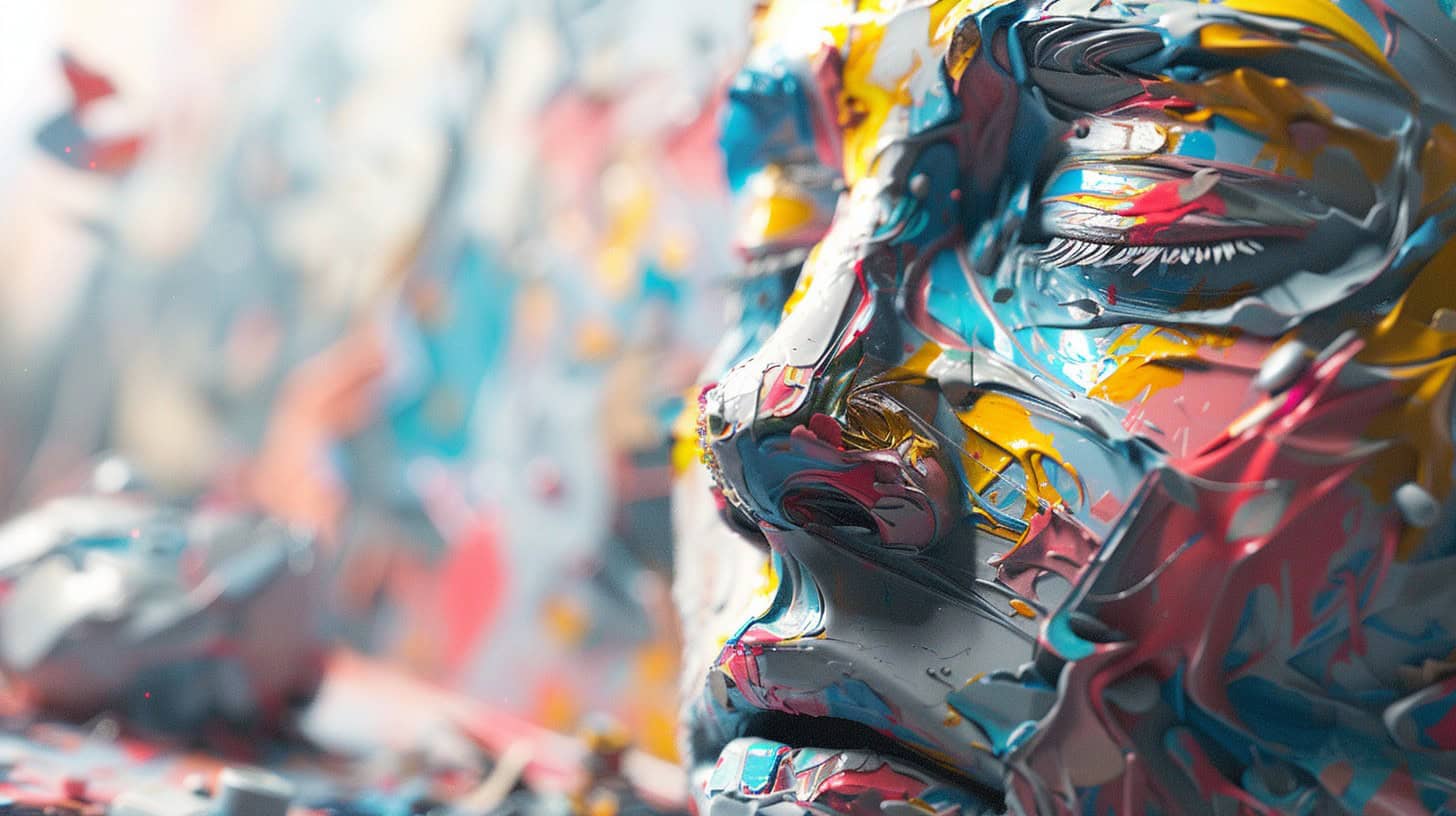
Making money with AI art is more than possible—it’s thriving. You can sell your digital masterpieces online or turn them into unique tokens that collectors might buy. Some artists offer their skills as a service, creating custom pieces for others.
And why not put your art on T-shirts or mugs and sell them? Or, share your knowledge through workshops and classes. With creativity, the sky’s the limit—ready to explore these paths further?
Selling AI-generated Art Online
Selling AI-generated art online opens many doors. Places like Etsy and Shutterstock let artists put their digital creations up for sale. I tried this myself. Using a tool called Canva AI, I made unique pieces and listed them.
It was easy to start, just needed good pictures and catchy titles.
Prices can vary, from $244 to $1,631 on OpenSea for AI NFTs. This shows there’s real money in digital art sales. To succeed, use keywords that buyers are searching for. Also, show your art on social media to attract more viewers.
Every piece sold boosts your reputation as an artist in the online world.
Creating and Selling NFTs of Digital Art
Creating NFTs of digital art is a solid way to make money. You can use platforms like OpenSea, SuperRare, and Nifty Gateway. Here’s the deal – I made my first AI artwork and turned it into an NFT.
Prices for these can go from $244 to $1,631. All you need is your digital piece and a platform that supports NFT sales.
Turning digital art into NFTs opened new doors for me financially.
To get started, pick your best AI-generated image. Then, sign up on any of those platforms I mentioned earlier. Upload your work there – they guide you through it all step by step.
Make sure to set the right price by checking what others charge for similar pieces. This way, you dive right into selling without getting lost in details.
Offering AI Artwork As A Service
You can make good money by providing AI artwork as a service. This means you create custom art pieces for clients using AI tools. Tools like DALL-E, Midjourney, and Jasper are perfect for this job.
You just need to understand what the client wants and use the right technology to make it happen. It’s possible because these tools have improved a lot recently.
Start by showing off your best AI-generated images online. Use social media or create a website. Then, offer to make unique images for others for a price. Sites like Fiverr and Upwork are great places to sell your services.
Here, you can set up packages offering different kinds of artwork – from logo designs to full-blown digital paintings. Remember, people always look for unique art that stands out, so give them exactly that!
Selling Prints And Merchandise Of AI Art
Platforms like Etsy, Redbubble, Gumroad, and Teespring let AI artists sell their work easily. They can make t-shirts, posters, mugs, and more with their AI art. This is a great way to earn money while sharing art with the world.
From my own experience selling prints of AI-generated landscapes on Etsy, these platforms handle most of the hard work. They print items for you once someone makes a purchase. All you need to do is upload your artwork and choose what products you want it on.
It’s that simple! Plus, each sale gives an artist royalties—money they earn from every item sold.
Teaching AI Art Workshops and Courses
After exploring how to sell prints and merchandise of AI art, another profitable route is teaching AI art workshops and courses. Skillshare and Udemy are prime spots for launching online courses that guide students through using AI art generators to create eye-catching prints.
The rising demand for these skills means teachers can attract many students. Sharing expertise on platforms like these not only builds a loyal following but also secures a steady income.
Courses should cover a range of topics—from the basics of generative artificial intelligence to advanced techniques in image editing with tools such as PicsArt and Fotor. Instructors need to design their lessons to include practical exercises where learners use popular AI image generators like DALL-E by OpenAI and NightCafe.
By doing this, instructors ensure their students gain hands-on experience, boosting the course’s value and appeal.
Tips for Success with AI Art
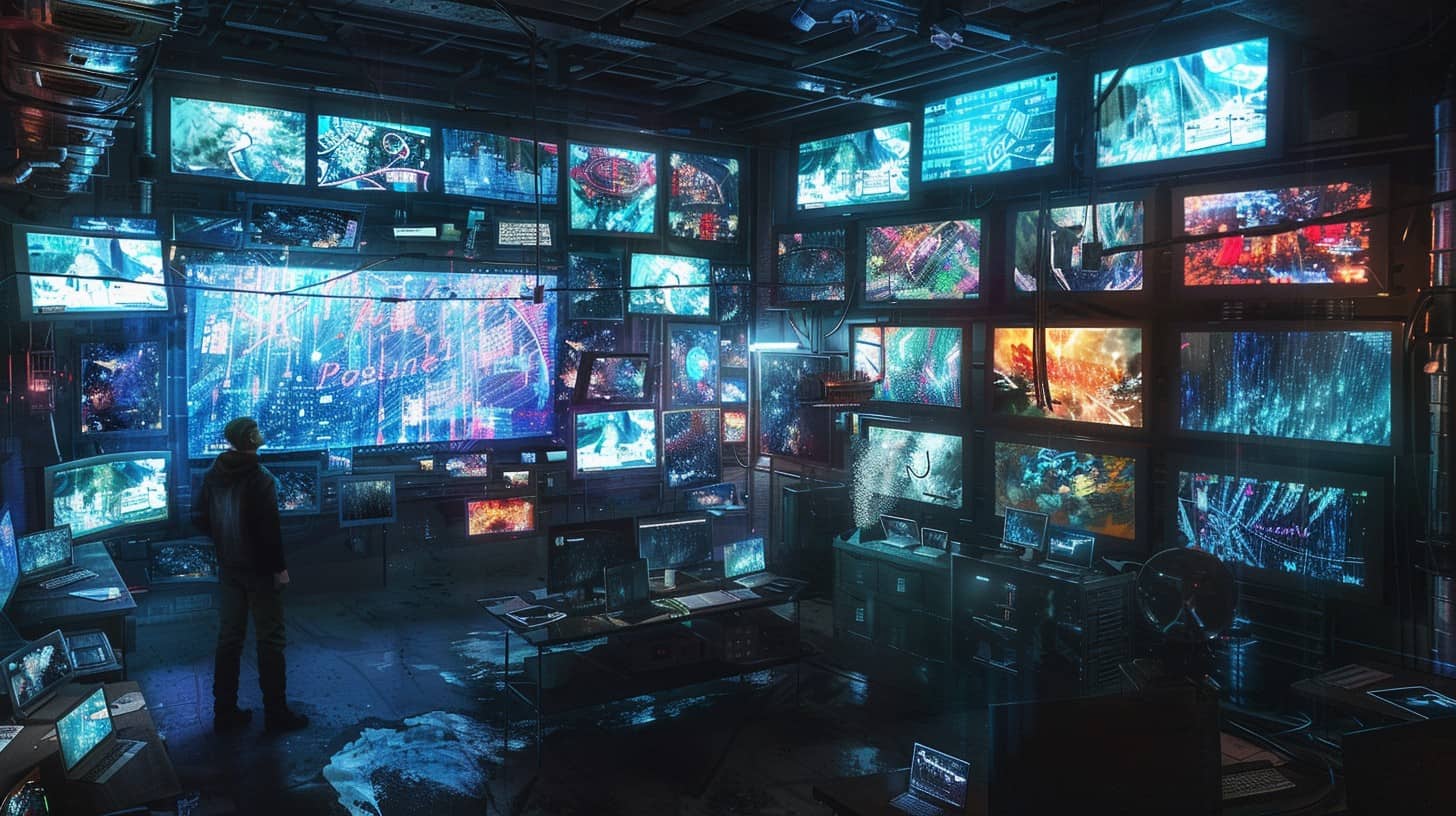
For success with AI art, keep learning and connecting. Read more to discover how!
Developing Your Own Unique Style
To make your AI art stand out, develop a unique style. This means trying different techniques and using varied tools. Look for inspiration everywhere and mix in your own experiences.
Your art will become unique.
Create a portfolio that shows off this original style to attract clients. Use AI to experiment with styles from generative AI, neural networks, to machine learning models. Play with compositions till you find what speaks to you and others will notice too.
Building A Strong Online Presence
Having a strong online presence is key. Start by making a website that shows off your AI art. Use platforms like Instagram, Pinterest, and Twitter to share your work. These sites let you show your creations to the world.
Make sure your posts stand out with great pictures and smart hashtags.
Next, join online communities related to AI art and tech geeks. Sites like Reddit and Discord are good spots. Share tips, get advice, and talk about recent trends in these groups. This helps more people learn about what you do.
Keep everything updated regularly with new work or achievements to keep followers interested and coming back for more.
Staying Up-to-Date With AI Art Trends And Technology
To keep pace with AI art trends, follow top artists and tech news. Websites and social media are good places to start. Tools like DALL-E 2 by OpenAI change often. So do methods to create virtual images.
Reading articles from trusted sources helps too. They explain new techniques and tools in simple terms.
Joining online forums or groups that focus on AI technology is another smart move. People there share their findings about software updates or design tricks they discovered. For example, discussions might cover how Canva’s AI feature got better for making digital images more appealing without extra work from the user.
Keeping an eye on these conversations ensures you don’t miss out on ways to improve your creations or learn something new that could help make your art stand out.
Being Aware Of Copyright Issues
Keeping up with AI art technologies means also understanding the legal side. Copyright issues are real. You can’t just use any image or idea without permission. This is because of laws that protect creators’ work.
I learned this the hard way when making my first AI art piece for sale. You need to make sure your creations don’t copy someone else’s copyrighted work.
Copyright law affects how you create and sell AI art. For example, using a famous painting as a base for your AI-generated artwork might be illegal without the right permissions. Always check if you need permission to use certain elements in your art pieces.
This helps avoid legal trouble and respects other artists’ rights. Plus, it keeps your work original and unique!
Collaborating With Others In The AI Art Community
Working closely with other AI artists opens doors to new ideas and opportunities. You find insights you might miss on your own. I joined a few online forums and instantly connected with creators across the globe.
We share tips, critique each other’s work, and discuss trends in artificial intelligence art. This collaboration has sharpened my skills faster than if I had worked alone.
Another big plus is joining or creating events like exhibitions. These gatherings highlight our works to new audiences and connect us directly with professionals looking for unique pieces.
My first exhibition led to two commissions because someone saw potential in my style of mixing classic art techniques with modern AI themes.
FAQs About How to Make Money With AI Art
What is AI art, and how can it make me money?
AI art combines artificial intelligence, like machine learning algorithms and deep neural networks, to create unique artworks… Think Beeple or Starry Night collages. Sell these as prints, digital downloads, or on merchandise to make cash.
Can I use AI for advertising my art?
Yes! Use AI-powered recommendation engines and advertising campaigns to target buyers effectively. Personalize ads based on customer experiences… Watch your sales grow.
How do pricing and shopping work with AI art?
Set your prices using AI-based tools that analyze purchase patterns and competition… Make buying easy with an automated checkout system – PayPal works great!
Are there any legal issues I should worry about?
Mind the intellectual property rights when creating or selling AI-generated images… Always ensure you’re not infringing on someone’s copyright with your creations.
How does personalization improve sales in e-commerce for artists?
Personalization – tailoring recommendations and search results – boosts customer experience big time… It turns casual browsers into buyers by showing them exactly what they want to see.
Any tips for getting started from scratch?
Start simple: use graphic design software powered by AI for tasks like retouching or style transfer… Build a portfolio, set up an online shop (e-commerce platforms are key), then advertise smartly – think banner ads or social media posts tailored by AI technologies.
